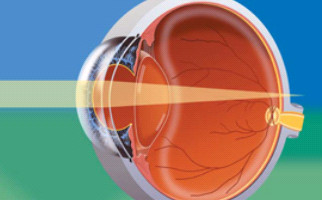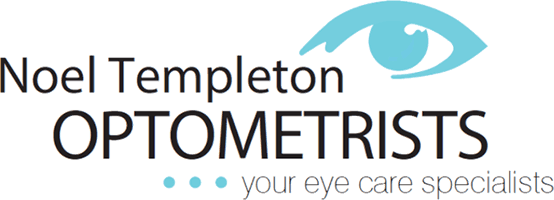-
Hyperopia : Often called Long-Sighted
Hyperopia,farsighted, Longsighted, or hypermetropia, is a defect when the eyeball is too short or the cornea too flat. This causes difficulty focusing on near objects, and in extreme cases a sufferer to be unable to focus on objects at any distance.

The need to accommodate to clear the blurred vision may also cause a child to develop a squint ( cross eyed ) and each eye may function independently, so a child with hyperopia from birth presents with decreased visual perception in one eye ( amblyopia).

Presbyopia causes blurry near vision this is because of a reduced accommodative amplitude brought about by natural aging changes with the crystalline lens. A person with hyperopia will need reading spectacles at a younger age.

Symptoms
Blurred vision of close objects
Crossed eyes (strabismus) in some children
Eye strain
Headache while readingA farsighted person has trouble reading but may find it easy to focus in the distance.
Farsightedness is often present from birth, but children have a very flexible eye lens, which helps make up for the problem. As aging occurs, glasses or contact lenses may be required to correct the vision. Farsightedness is often hereditary.
Visual acuity is affected according to the amount of hyperopia, as well as the patient’s age, visual demands, and accommodative ability, often children will NOT complain of blurred vision and may pass a school screening test.
The parents of a child with hyperopia do not always realize that the child has a problem at an early age. A hyperopic child might have problems with catching a ball because of blurred vision and because of a decreased ability to see three-dimensional objects. The child will typically perform below average at school. As soon as a child starts identifying images, a parent might find that the child cannot see small objects or pictures.
In many circumstances mild to moderate hyperopia can be mistaken for ADHD; or other learning and personality disorders. One coping mechanism many children subconsciously use is constant head and body movement to attempt to maintain focus.
Various eye care professionals, including ophthalmologists, optometrists, orthoptists, and opticians, are involved in the treatment and management of hyperopia. At the conclusion of an eye examination, an eye doctor (ophthalmologist or optometrist) may provide the patient with an eyeglass prescription for corrective lenses. Minor amounts of hyperopia are sometimes left uncorrected. However, larger amounts may be corrected with convex (positive power) lenses in eyeglasses or contact lenses.
Hyperopia is correctable with various refractive surgery procedures normally after the eye is stable typically early twenties.
More About Hyperopia or Long Sightedness
Location & Contact Details
© 2017 - 2025 Noel Templeton Optometrists



